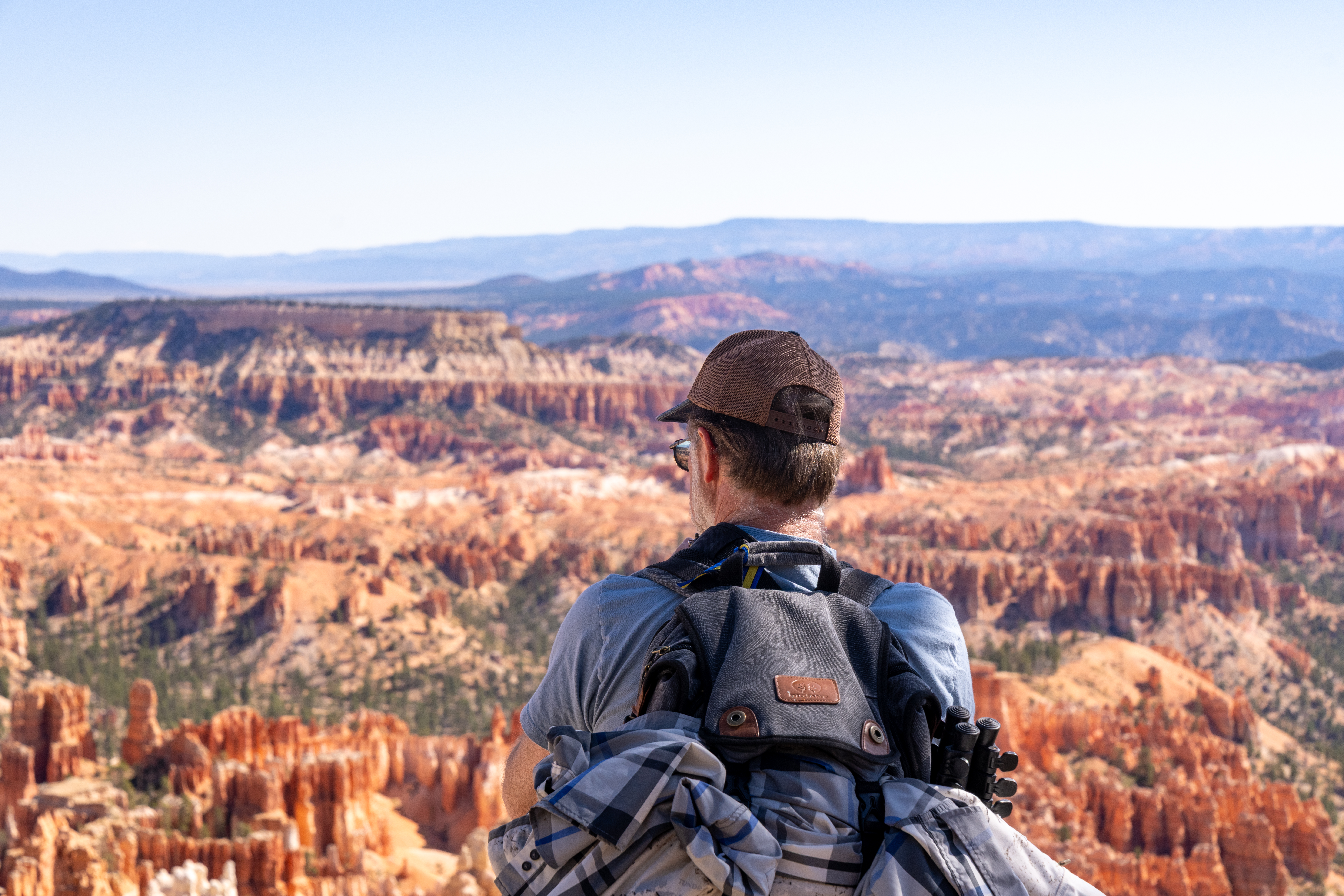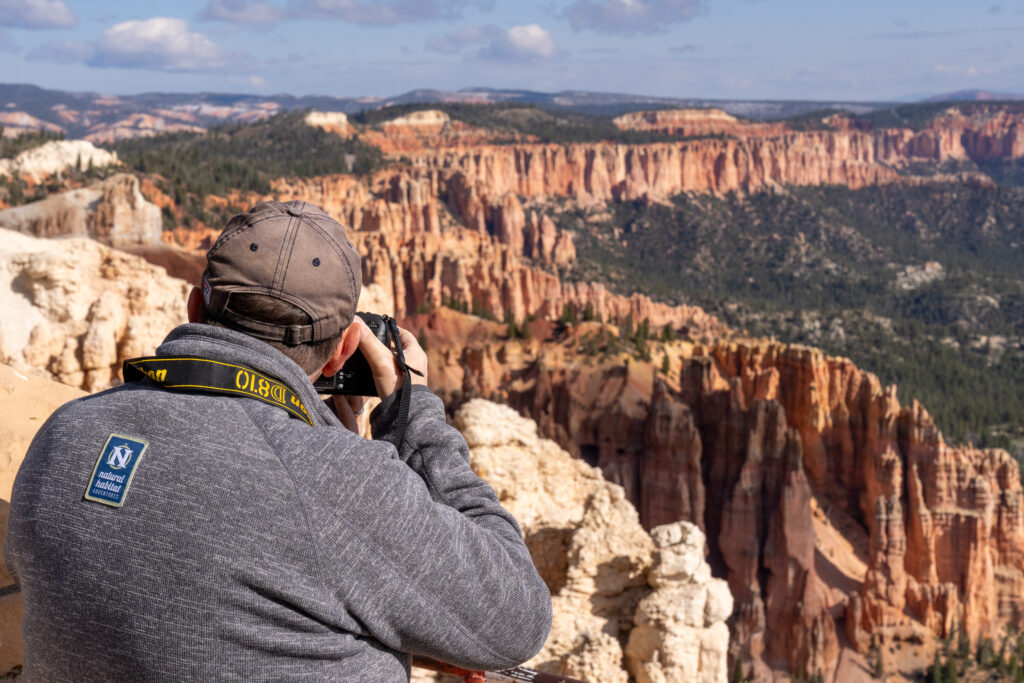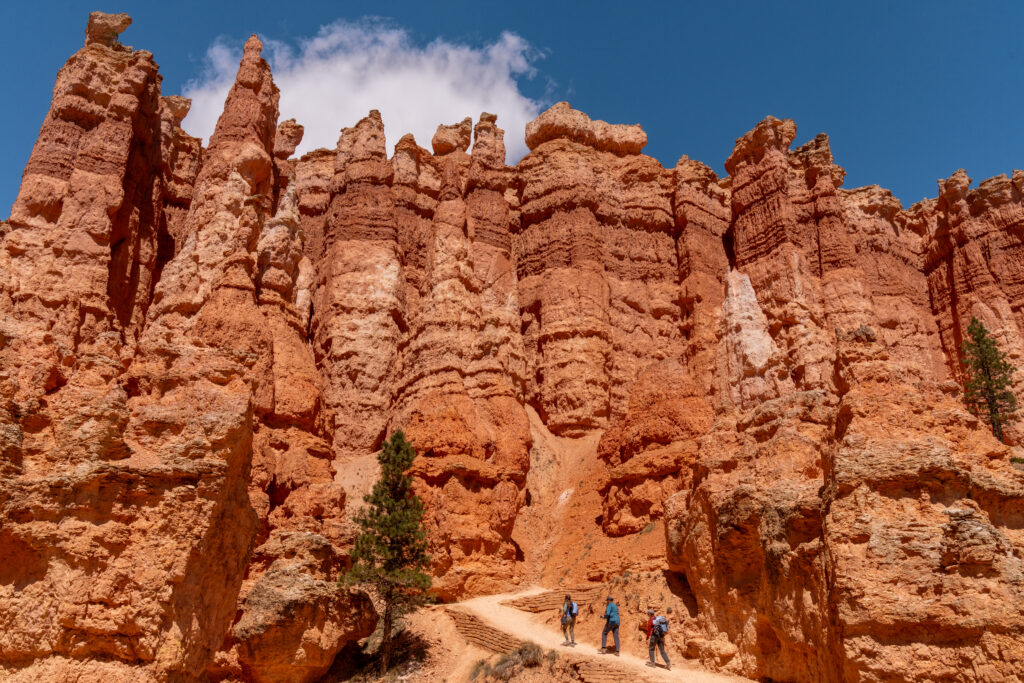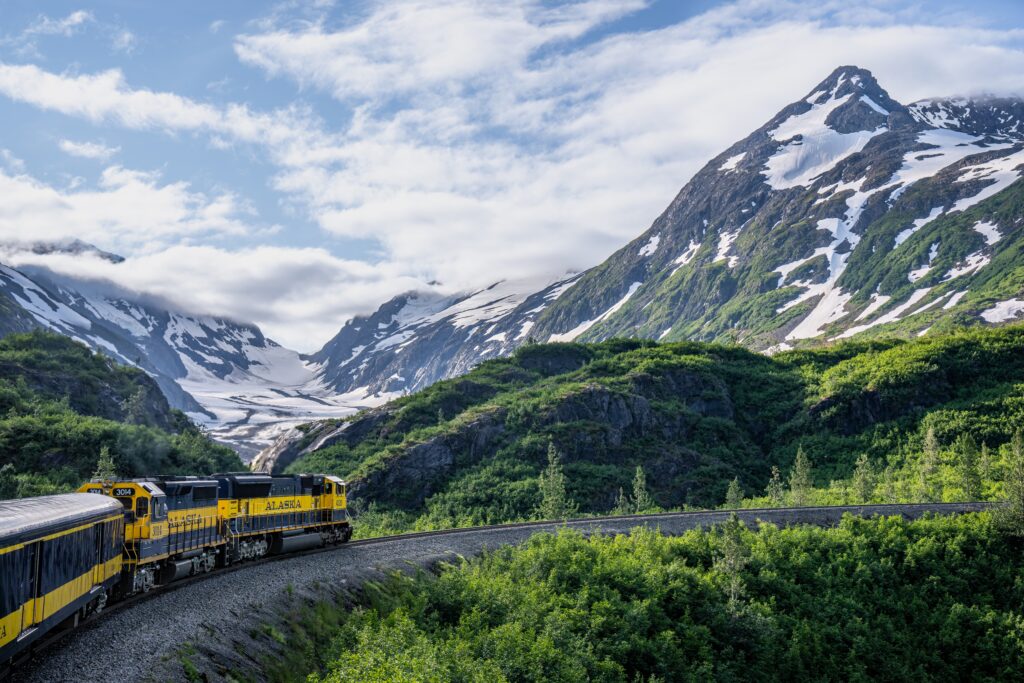
Proof You Were There: The Human Element
When someone looks at your nature photographs, their attention almost always goes straight to the obvious: the mountains glowing at sunrise, the fishing bear, the iceberg catching the light just so. What they don’t usually think about is you. The person who woke up at 4 a.m., hiked the miles, endured the weather, and stood in just the right spot to get that shot. The human effort behind the frame often goes unseen.
That’s why including people in your images can be so powerful. A hiker dwarfed by canyon walls or a traveler gazing out from a skiff isn’t just a compositional choice; it’s proof of presence. It tells the story of what it took to be there, how adventure is experienced, and why the photo matters; giving your viewer the feeling of “I want to be there.” So let’s talk about how to capture your travel companions without turning them into awkward photo props.
The Classic: Over-the-Shoulder

One of the easiest ways to photograph fellow travelers is to shoot over their shoulder, looking out at the world with them. It’s less “say cheese” and more “see what I see.” This style works because it feels like an invitation; the viewer gets to step into the scene through another person’s perspective. A few tips:
- Frame the head carefully: Don’t chop off ears unless you’re going full abstract. Keep the head slightly off-center so the landscape can stretch ahead. Also, don’t zoom out so far that you include their derrière. No one wants their rear end center stage.
- Wardrobe counts: A bright jacket or charismatic hat can become part of the composition. Neutral earth tones can make them disappear into the scene, making it hard for your subject to stand out.
- Focus trick: The ultimate challenge of this composition is keeping your subject sharp without losing the context of the beautiful landscape into a fuzzy bokeh. Step back and zoom in with a telephoto to compress the shot, keeping the aperture at a mid-range like f8.
Think of it as storytelling without dialogue. One person, one view, one sense of wonder.
Small People, Big Landscape

Few compositions pack as much impact as a tiny human dwarfed by a massive landscape. An amphitheater of Hoodoo spires in Bryce, a hiker on a ridge, a lone figure against endless sand dunes; these shots remind us that the planet is both humbling and worth protecting. Here’s how to nail it:
- Zoom with your feet: Don’t be afraid to hang back until your subject becomes an ant. This exaggerates scale. Just prepare to run to catch up!
- Contrast matters: Even more important than with the over-the-shoulder; bright, contrasting clothing pops against the landscape. Otherwise, your viewer may not notice the added human element, leaving your photo lacking.
- Positioning: Place your adventurer on a line; a canyon edge, a winding trail, or the lip of a cliff. A strong geometric relationship helps the image feel composed instead of accidental.
This isn’t just a landscape shot with a token person in it. It’s a reminder of why we go: to feel small, alive, and in awe.
People and Wildlife: Tread Carefully

This is where things get tricky. Yes, a traveler in a boat with a whale in the background can be a once-in-a-lifetime shot. But you don’t want to look like you staged an audition for “When Animals Attack!” The key is respectful distance and composition that tells the story of coexistence, not intrusion.
- Foreground and background: Keep your travel companions large enough to identify, but not so big that they overpower the wildlife.
- Safety first: No photo is worth risking your life or the animal’s. Stick to the viewing distances set by your guides and use a large telephoto to compress the distances between your subjects.
- Narrative angle: Photograph the act of photographing. Someone leaning over a railing, camera raised, can say as much about the adventure as the whale itself.
Done well, these shots capture a sense of shared planet; a human humbled before a wild denizen.
The Ride is the Adventure

What do they say “it’s not the destination, it’s the journey”? Sometimes the adventure is the ride itself. A train carving through a glaciated pass, a raft bucking whitewater, a truck kicking up dust on a canyon road. Vehicles in motion are symbols of exploration, and photographing your fellow travelers inside or alongside them tells a kinetic story. A few ways to make it sing:
- Blur for speed: Slow your shutter to let motion streak around the vehicle while your companions stay sharp.
- Window frames: Photograph a traveler through a train window; glass, reflection, and landscape layers make for rich compositions.
- Lean into grit: Mud-splattered faces, windblown hair, people hanging onto railings. These are the adventure badges that make a photo feel real.
Don’t underestimate the romance of a good train shot; steel against mountains, heading off into adventure.
Beyond the Obvious

Sure, there are set pieces like hikers on ridges or travelers snapping whale tails. But don’t forget the quieter human moments that complete your story.
- Campfire candids: Warm faces in firelight are timeless.
- Trail exhaustion: Slumped bodies on backpacks make for honest, relatable images.
- Celebratory portraits: A person raising a thermos at sunrise or leaning back to laugh in the rain adds texture to the bigger adventure.
These images don’t need to be perfect, glowing with golden light. They need honesty; the kind of shots that will make your fellow travelers laugh (and maybe groan) when you show them later.
Final Thoughts
Adventure photography isn’t just about rocks, ice, and wildlife. It’s about the people who lace up boots, climb into skiffs, and ride the rails beside you. Photographing your fellow travelers is what turns a photo album into a story. Whether you choose to trek through the red rock cathedrals of the Bryce Canyon, cruise alongside whales and icebergs, or pursue bears in Alaska, you’ll have landscapes, wildlife, and plenty of fellow adventurers to bring into your frame.
Happy photographing,

Leave a reply